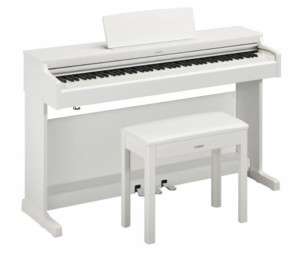How does a violin work? How many strings does it have? And other interesting facts about the violin…
Contents
Of course, everyone knows the violin. The most refined and sophisticated among string instruments, the violin is a way of transmitting the emotions of a skilled performer to the listener. While sometimes gloomy, unrestrained and even rude, she remains tender and vulnerable, beautiful and sensual.
We have prepared for you some fascinating facts about this magical musical instrument. You will learn how a violin works, how many strings it has, and what works are written by composers for the violin.
How does a violin work?
Its structure is simple: body, neck and strings. Tool accessories vary widely in their purpose and importance. For example, one should not overlook the bow, thanks to which sound is extracted from the strings, or the chinrest and bridge, which allow the performer to place the instrument most comfortably on the left shoulder.
There are also accessories like a machine, which allows the violinist to correct the tuning that has changed for any reason without wasting time, in contrast to the use of string holders – pegs, which are much more difficult to work with.
There are only four strings themselves, always tuned to the same notes – E, A, D and G. What are violin strings made of? From different materials – they can be vein, silk or metal.
The first string on the right is tuned to E of the second octave and is the thinnest of all the strings presented. The second string, together with the third, “personify” the notes “A” and “D”, respectively. They have an average, almost identical thickness. Both notes are in the first octave. The last, thickest and bassiest string is the fourth string, tuned to the note “G” of the small octave.
Each string has its own timbre – from piercing (“E”) to thick (“Sol”). This is what allows the violinist to convey emotions so skillfully. The sound also depends on the bow – the reed itself and the hair stretched over it.
What types of violins are there?
The answer to this question may be confusing and varied, but we will answer quite simply: there are the most familiar wooden violins for us – the so-called acoustic ones, and there are also electric violins. The latter operate on electricity, and their sound is heard thanks to the so-called “speaker” with an amplifier – a combo. There is no doubt that these instruments are designed differently, although they may look the same in appearance. The technique of playing an acoustic and electronic violin is not significantly different, but you have to get used to an analog electronic instrument in its own way.
What works are written for violin?
The works are a separate topic for reflection, because the violin shows itself magnificently both as a soloist and in ensemble playing. Therefore, solo concerts, sonatas, partitas, caprices and plays of other genres are written for the violin, as well as parts for all kinds of duets, quartets and other ensembles.
The violin can participate in almost all types of music. Most often at the moment it is included in classics, folklore and rock. You can even hear the violin in children’s cartoons and their Japanese adaptations – anime. All this only contributes to the increasing popularity of the instrument and only confirms that the violin will never disappear.
Famous violin makers
Also, don’t forget about the violin makers. Probably the most famous is Antonio Stradivari. All his instruments are very expensive, they were valued in the past. Stradivarius violins are the most famous. During his lifetime, he made more than 1000 violins, but at the moment between 150 and 600 instruments have survived – the information in various sources is sometimes amazing in its diversity.
Other families associated with violin making include the Amati family. Different generations of this large Italian family improved bowed musical instruments, including improving the structure of the violin, achieving a strong and expressive sound from it.
Famous violinists: who are they?
The violin was once a folk instrument, but over time the technique of playing it became complex and individual virtuoso craftsmen began to emerge from among the people, who delighted the public with their art. Italy has been famous for its violinists since the musical Renaissance. It is enough to name just a few names – Vivaldi, Corelli, Tartini. Niccolo Paganini also came from Italy, whose name is shrouded in legends and secrets.
Among the violinists who came from Russia are such great names as J. Heifetz, D. Oistrakh, L. Kogan. Modern listeners also know the names of current stars in this field of performing arts – these are, for example, V. Spivakov and Vanessa-Mae.
It is believed that in order to start learning to play this instrument, you must have at least a good ear for music, strong nerves and patience, which will help you overcome five to seven years of study. Of course, such a thing cannot do without disruptions and failures, however, as a rule, even these are only beneficial. The study time will be difficult, but the result is worth the pain.
Material dedicated to the violin cannot be left without music. Listen to the famous music of Saint-Saëns. You’ve probably heard it before, but do you know what kind of work it is?
C. Saint-Saens Introduction and Rondo Capriccioso



